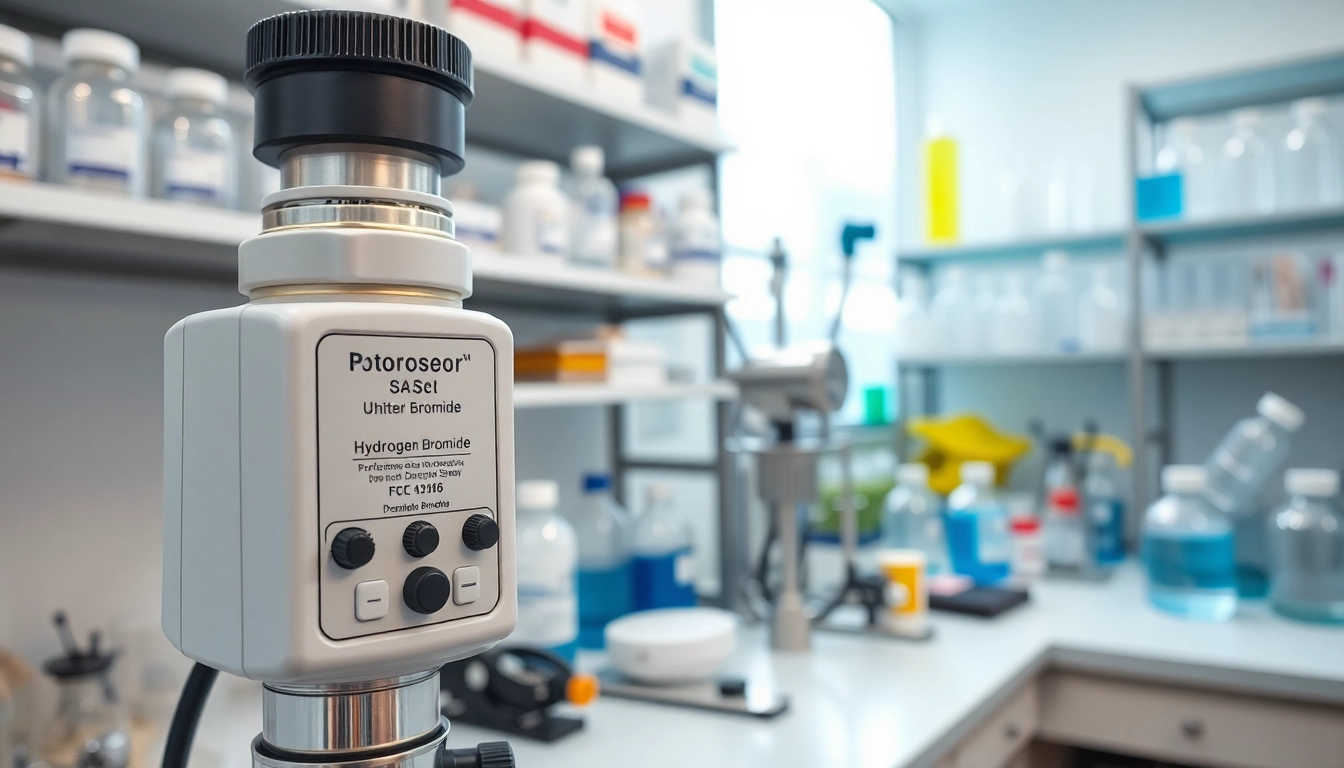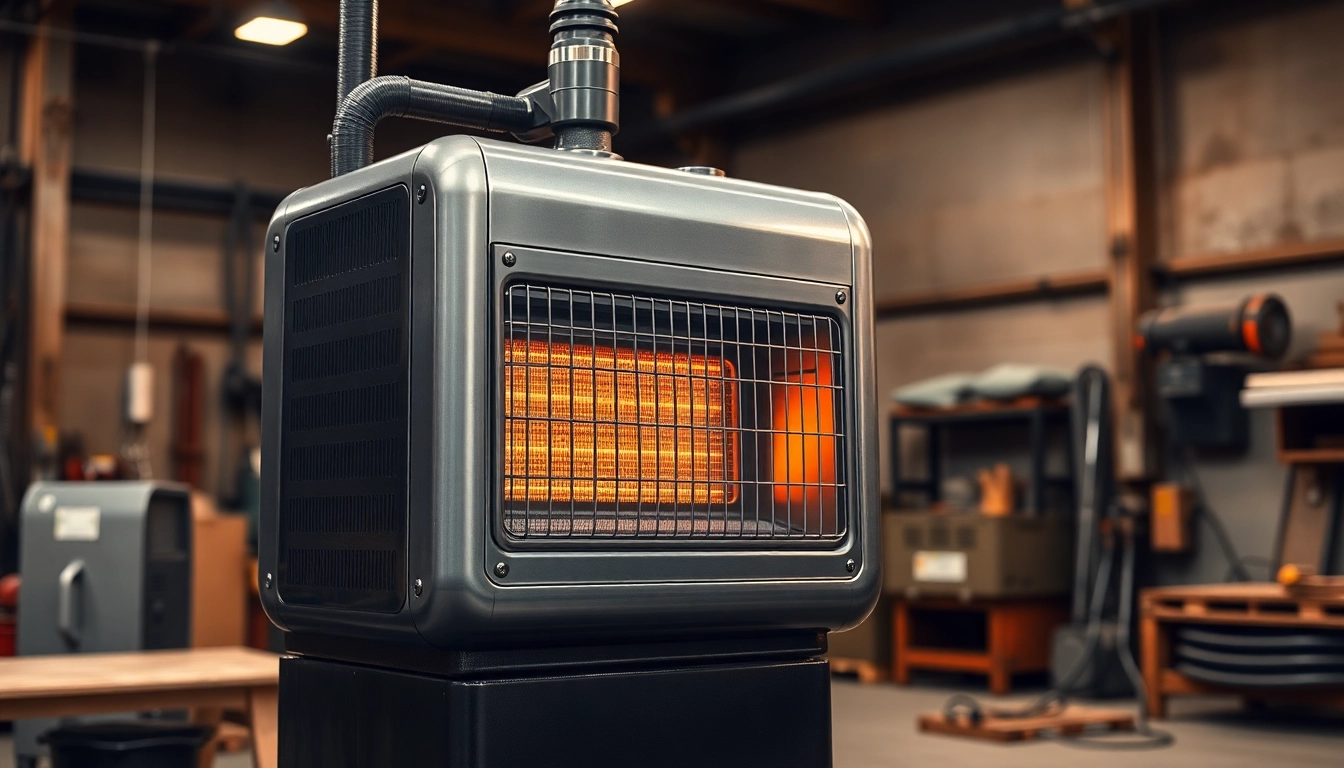Understanding Hydrogen Bromide and Its Hazards
Description and Properties of Hydrogen Bromide
Hydrogen bromide (HBr) is a colorless gas at room temperature, with a pungent odor that resembles that of hydrochloric acid. It is classified as a diatomic molecule, where hydrogen (H) and bromine (Br) are bonded covalently. Under standard atmospheric conditions, it is a dense gas that can be absorbed in water to form hydrobromic acid, a strong acid used in various chemical applications. Due to its chemical properties, such as being highly corrosive and reactive with metals and organic compounds, hydrogen bromide presents significant hazards if not properly managed. Its molecular weight is approximately 80.91 g/mol, and it has a boiling point of -66.8 degrees Celsius, making it highly volatile.
Health Risks Associated with Hydrogen Bromide Exposure
The exposure to hydrogen bromide can lead to serious health risks, especially in workplaces where it is used or produced. Acute exposure may result in irritation of the respiratory tract, eyes, and skin. Symptoms of exposure can include coughing, choking, shortness of breath, and chest pain. Inhalation of high concentrations may result in severe lung injury or pulmonary edema. Chronic exposure could cause damage to the lungs and respiratory system. The Occupational Safety and Health Administration (OSHA) has established permissible exposure limits to mitigate these risks and protect workers. Understanding these hazards is crucial in ensuring safety measures are followed.
Importance of Detection in Various Industries
Efficient detection of hydrogen bromide is vital in various industries, including chemical manufacturing, pharmaceuticals, and laboratories. Safety measures and regulatory compliance necessitate that workplaces utilize Hydrogen Bromide detectors to monitor air quality and exposure levels. These detectors not only prevent accidents but also safeguard the health of employees by providing real-time data on gas concentrations. In environments where hydrogen bromide is produced or used, having reliable detection systems can mean the difference between safety and disaster.
Types of Hydrogen Bromide Detectors
Overview of Available Detector Technologies
Hydrogen bromide detectors come in various technologies, each designed to effectively identify the presence of this hazardous gas. Some prevalent technologies include:
- Electrochemical Sensors: These sensors work by detecting the change in electrical current produced by the interaction of hydrogen bromide with the sensor’s electrodes.
- Infrared Sensors: Utilizing infrared light, these detectors measure the absorption of specific wavelengths related to hydrogen bromide, providing accurate readings even in varying environmental conditions.
- Metal-Oxide Semiconductor Sensors: These sensors rely on the change in resistance of a metal oxide when exposed to hydrogen bromide, offering a cost-effective detection solution but may require regular calibration.
- Photoionization Detectors (PIDs): PIDs use ultraviolet light to ionize hydrogen bromide and measure the current produced, allowing for highly sensitive detection.
Comparison of Sensor Types for Hydrogen Bromide Detection
Choosing the appropriate detector involves understanding the strengths and weaknesses of each technology. Electrochemical sensors are highly sensitive and ideal for low concentration ranges but may have limited operational life. Infrared sensors are excellent for large-scale monitoring and can handle a wider range of concentrations but come at a higher cost. Metal-oxide semiconductors are generally more affordable but may yield less accuracy and require frequent recalibration. Photoionization detectors offer superior sensitivity and rapid response time, making them suitable for environments with fluctuating concentrations; however, they may be less effective in humid conditions.
Choosing the Right Hydrogen Bromide Detector for Your Needs
When selecting a hydrogen bromide detector, several factors must be considered:
- Application: The specific industry and application (e.g., laboratory, chemical manufacturing) will dictate the type of sensor needed.
- Concentration Levels: Understand the expected concentration levels of hydrogen bromide in your environment to ensure the chosen detector is suitable.
- Environmental Conditions: Consider factors like humidity, temperature, and potential exposure to other chemicals that could influence sensor performance.
- Budget: While cost shouldn’t be the only consideration, it’s important to select a detector that fits your budget while meeting safety standards and requirements.
Installation and Setup of Hydrogen Bromide Detectors
Key Considerations for Effective Installation
The installation of hydrogen bromide detectors requires careful consideration to ensure effective monitoring. It is essential to identify areas with the highest risk of hydrogen bromide release, such as near storage tanks, processing areas, and laboratory environments. Detectors should be positioned at breathing height (typically around four to six feet off the ground) and away from obstructions that could hinder airflow.
Common Mistakes to Avoid During Setup
There are several common pitfalls during the installation and setup of hydrogen bromide detectors:
- Improper Placement: Positioning detectors too close to sources of interference, such as exhaust fans or heat sources, can lead to inaccurate readings.
- Lack of Adequate Testing: Failing to test the detectors after installation may result in undetected malfunctions that could compromise safety.
- Ignoring Manufacturer Guidelines: Each detector comes with specific installation instructions; neglecting them may affect performance and reliability.
Calibration Guidelines for Accurate Readings
Calibrating hydrogen bromide detectors is critical to maintain their accuracy over time. Calibration should be performed regularly and as per the manufacturer’s instructions. This usually involves exposing the sensor to known concentrations of hydrogen bromide and adjusting the readings accordingly. Factors such as temperature and humidity should also be monitored as they can influence detector performance. Proper documentation of calibration processes and results should also be maintained for compliance and review during safety audits.
Maintenance of Hydrogen Bromide Detectors
Routine Checks and Maintenance Procedures
Routine maintenance of hydrogen bromide detectors includes checking for physical damage, cleaning sensors, and verifying battery life if applicable. Regularly scheduled inspections should be conducted to ensure that the detectors are functioning correctly and that the readings are within acceptable ranges. Maintenance logs can provide valuable insights into the performance history of each detector.
Signs Your Hydrogen Bromide Detector Needs Attention
There are several signs that indicate a hydrogen bromide detector may require maintenance or replacement:
- Persistent false alarms indicating malfunction.
- Slow response time to known concentrations of hydrogen bromide.
- Physical damage or signs of corrosion on the detector housing.
Best Practices for Extending Detector Lifespan
To extend the lifespan of hydrogen bromide detectors, consider the following best practices:
- Keep Sensors Clean: Dust and debris can affect performance, so regular cleaning with appropriate materials is essential.
- Avoid Electrical Surges: Protect detectors from electrical surges by using surge protectors or uninterruptible power supplies (UPS).
- Implement a Maintenance Schedule: Establish a routine maintenance schedule, including regular calibrations, to ensure all detectors are operating effectively.
Real-World Applications and Case Studies
Case Study: Successful Implementation in Industrial Facilities
A prominent chemical manufacturing facility faced challenges around hydrogen bromide exposure among its employees. After implementing an advanced hydrogen bromide detection system across critical areas, they significantly reduced exposure incidents. The system provided real-time monitoring and immediate alerts, allowing for swift responses in case of any hazardous gas readings. Over the course of the first year, the facility reported a 75% reduction in employee incidents attributed to hydrogen bromide, showcasing the effectiveness of proper detection systems.
Innovative Usage of Hydrogen Bromide Detectors in Laboratory Environments
In research labs specializing in chemical reactions involving hydrogen bromide, innovative detection technology has enabled researchers to conduct experiments safely. Incorporating portable hydrogen bromide detectors allows scientists to monitor concentrations in real-time, which is invaluable when dealing with volatile reactions. Such practices have led to safer laboratory environments, thereby improving overall safety culture and research outcomes.
Feedback from Industry Professionals on Detector Efficacy
Industry professionals emphasize the importance of having reliable hydrogen bromide detectors in place. Feedback indicates that having these systems not only enhances safety but also instills confidence in compliance with health regulations. Many professionals report that the integration of robust detection systems has resulted in a heightened awareness of workplace safety and significant declines in hazardous incidents.



